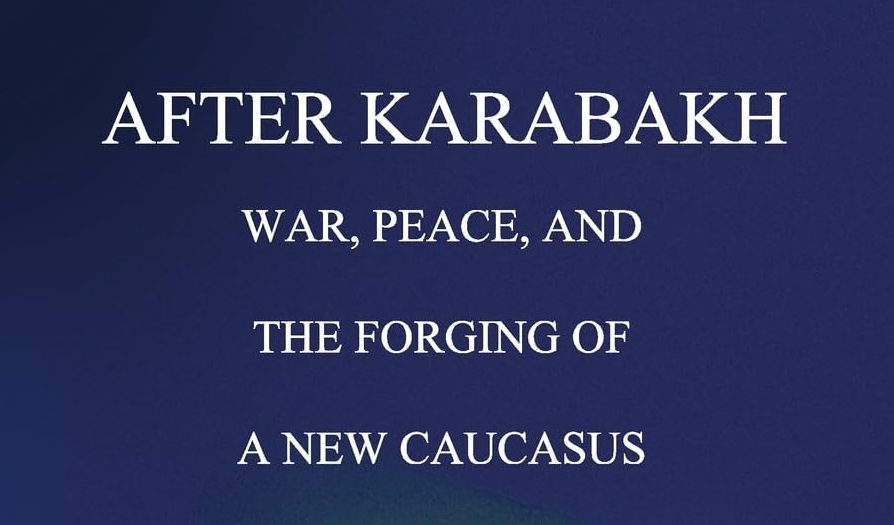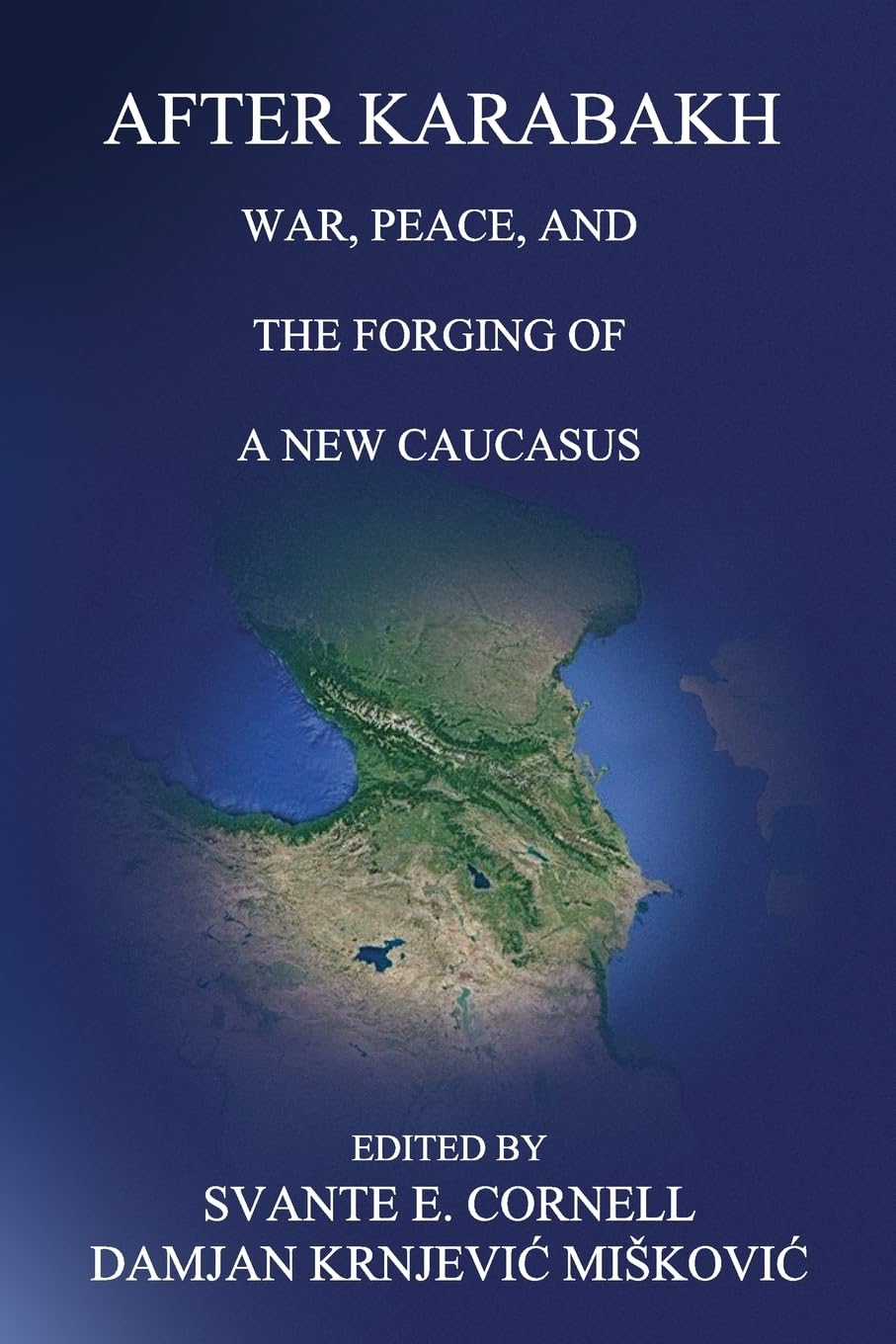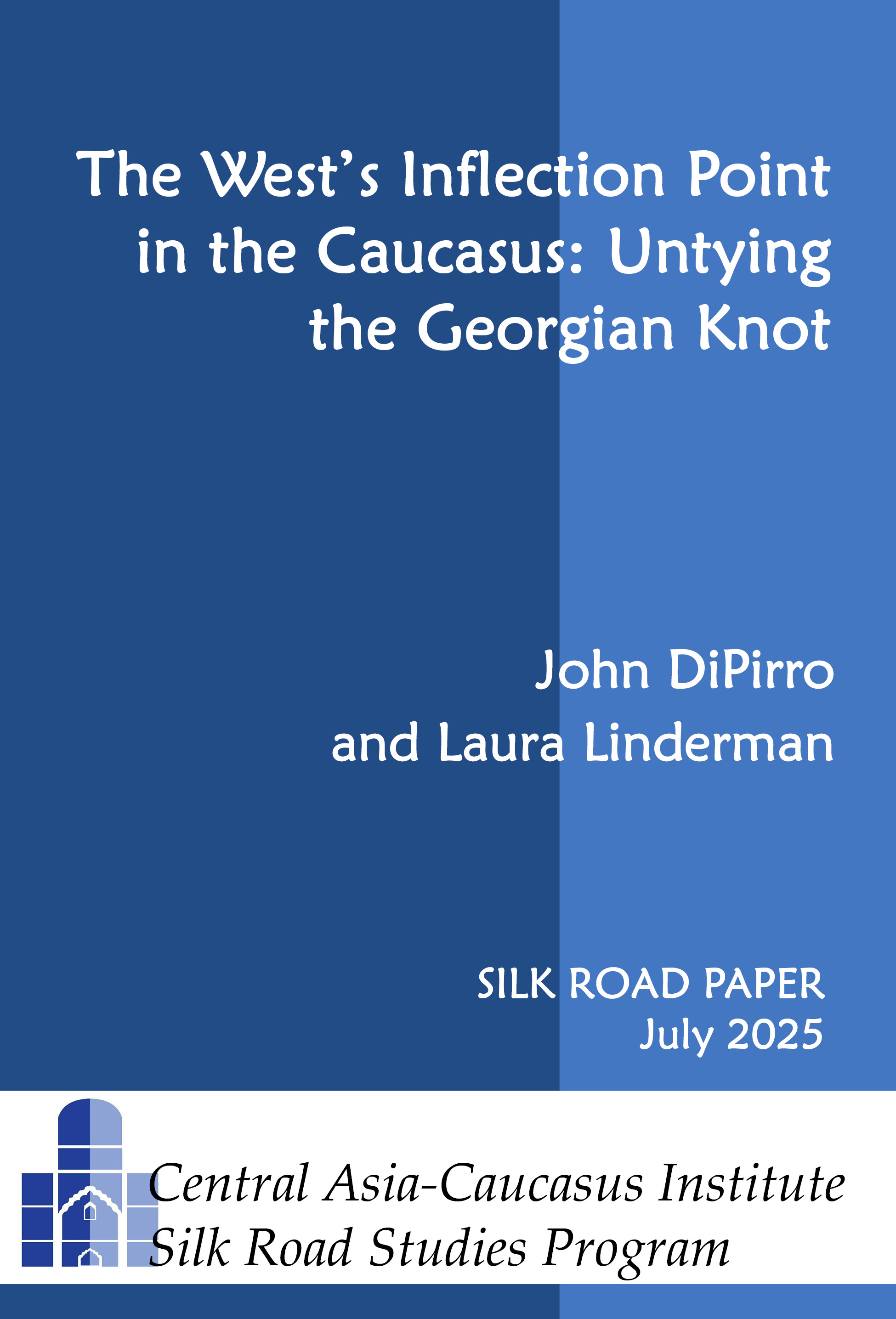Youth and Digital Technology in Central Asia: A Comparative Analysis of Uzbekistan, Kazakhstan, Kyrgyzstan, and Tajikistan
By Farrukh Irnazarov
Central Asia-Caucasus Institute & Silk Road Studies Program
Silk Road Paper
December 2025
Click Here to Download
Executive Summary:
 Central Asian youth between the ages of 15 and 29 are driving the region’s digital transformation, though opportunities are unequal across the region. This comparative study of Kazakhstan, Kyrgyzstan, Tajikistan, and Uzbekistan draws on a 468-respondent youth survey and extensive secondary data to map five dimensions of the online landscape.
Central Asian youth between the ages of 15 and 29 are driving the region’s digital transformation, though opportunities are unequal across the region. This comparative study of Kazakhstan, Kyrgyzstan, Tajikistan, and Uzbekistan draws on a 468-respondent youth survey and extensive secondary data to map five dimensions of the online landscape.
Access and Devices. Mobile internet has eclipsed all other channels: Kazakhstan, Kyrgyzstan, and Uzbekistan report 89 to 93 percent general adoption rate, while Tajikistan lags at 57 percent. Registered mobile service lines exceed population numbers in every country—reaching 159 percent in Kyrgyzstan—indicating that smartphones are the primary tool for study, work, and leisure.
Platforms and Culture. Telegram is the region’s primary newswire, while Instagram and YouTube shape identity and TikTok dominates leisure time. √ now trails social media as the main news source for Central Asian youth.
Socio-Economic Payoff. Digital skills open doors to remote work and start-ups — Kazakh ventures drew $71 million in venture capital and Uzbek ventures drew $17 million in 2024 — yet rural youth still face slow service and limited access to devices, widening the divide.
Literacy Gap. Nine in ten youths say accuracy matters, but barely half fact-check routinely, leaving them exposed to propaganda and fake news, despite growing efforts by non-governmental organizations (NGOs) to provide education on the topic.
Structural Limits. Cheap mobile data masks deeper barriers: expensive fixed broadband, patchy rural coverage, and renewed censorship hamper innovation and voice.
Country Snapshots. Kazakhstan leads the region in digital infrastructure, but risks repeat shutdowns; Uzbekistan saw growth after 2016 yet still grapples with red tape; Kyrgyzstan’s once-vibrant online sphere is tightening; and Tajikistan remains the most constrained.
What Works. The priorities are clear: complete last-mile broadband infrastructure, support an open and free internet, embed media-savvy curricula into education, and streamline start-up regulation and funding—especially for young women and rural creators. Achieving these goals will turn today’s mobile-native generation into the region’s next growth engine.
The Rise of the Organization of Turkic States: Is Turkic Cooperation Filling a Geopolitical Vacuum?
By Svante E. Cornell
Central Asia-Caucasus Institute & Silk Road Studies Program
Silk Road Paper
December 2025
Click Here to Download
Executive Summary:
In October 2025, the Organization of Turkic States (OTS) convened a pivotal summit in Gabala, Azerbaijan, demonstrating its emergence as a significant geopolitical entity on the Eurasian landscape. During the summit, Azerbaijani President Ilham Aliyev emphasized the OTS's evolution into a key geopolitical center, while Kazakh President Kassym-Jomart Tokayev referred to it as an authoritative structure uniting Turkic populations. This gathering marks a critical juncture in the organization’s development, solidifying its influence in a region that links the Mediterranean to Central Asia.

The Gabala summit showcased the OTS's commitment to enhancing collaboration on various fronts, including security, defense, economic development, transportation, digitalization, and sustainable energy. A notable development was the introduction of the "OTS plus" framework, which aims to strengthen partnerships with non-Turkic states in the vicinity. This evolution reflects a remarkable transformation for Turkic cooperation, escalating from modest aspirations to a robust international organization in a remarkably short period.
The emergence and rapid development of the OTS challenge conventional frameworks employed by Western bureaucracies to assess the geopolitics of the region. Typically categorized into rigid geographic divisions, bureaucracies covering the Middle East, Europe, and Central Asia often overlook the intricate relationships across these boundaries. Turkic cooperation ignores these geographic categorizations, as it not only resides within the context of former Soviet republics but also includes Turkey—a pivotal player straddling both Europe and the Middle East.
A key element of Turkic Cooperation is the relatively equal standing of its members. While Türkiye is obviously considerably larger than the other members, it is telling that the main drivers of Turkic cooperation for many years were Kazakhstan and Azerbaijan; and that Turkic cooperation really took off following Uzbekistan’s renewed enthusiasm for the initiative. In other words, the perception of the OTS as somehow beholden to Turkish President Erdogan is a red herring.
The ethnolinguistic character of Turkic cooperation has led many observers to remain skeptical, as it has led to the exclusion of non-Turkic states. Yet on a practical level, the OTS has displayed an openness to cooperate with countries like Georgia; more recently, the inclusion of an “OTS plus” format could create conditions for a more inclusive approach to regional states that are not majority Turkic.
Given the current geopolitical climate, the rise of the OTS is poised to reshape power dynamics across a broad expanse of territory, prompting a reevaluation of strategic frameworks by Western governments and multilateral organizations. Understanding the implications of the OTS's evolution will be crucial for policymakers and stakeholders engaged in the region and beyond.
Armenia’s Strategic Dilemma: Geography versus History
By Laura Linderman, Alexander John Paul Lutz, and Eleanor Pugh
Central Asia-Caucasus Institute & Silk Road Studies Program
Silk Road Paper
October 2025
Click Here to Download Armenia's Strategic Dilemma
Executive Summary:
Armenia faces significant challenges to its political stability and geopolitical security as it attempts a high-stakes strategic pivot away from its traditional Russian security patron and toward the West—a reorientation driven not by choice but by necessity, as the country finds itself militarily inferior, diplomatically isolated, and abandoned by unreliable security guarantors.
This reorientation, catalyzed by Russia’s failure to uphold its commitment to defending its Armenian ally from repeated Azerbaijani incursions into its territory, has given way to internal political turmoil and external security vulnerabilities. Most worryingly, this has created a dangerous feedback loop where the very concessions required for strategic survival generate domestic opposition that threatens to undermine the partnerships Armenia desperately needs. This piece argues that Armenia’s polarized domestic political environment—with opposition to the government of Prime Minister Nikol Pashinyan driven, primarily, by the trauma and insecurity of abandoning historical narratives, territorial claims, and institutional protections—both results from and impedes its geopolitical realignment, creating a vicious cycle where external security pressures exacerbate internal divisions, which, in turn, trouble the country’s moves toward a closer partnership with the West. Recently, the government’s pivot has mobilized a diverse opposition coalition, counting among its ranks clergy of the Armenian Apostolic Church, disillusioned oligarchs, the exiled leadership of the Republic of Artsakh, and ordinary citizens unwilling to accept that former enemies can become partners.
Despite such opposition, Armenia has achieved tangible results from Western engagement—including defense cooperation with France, weapons partnerships with India, and security exercises and strategic partnership agreements with the United States. And, most significantly, the recently proposed “Trump Route for International Peace and Prosperity” (TRIPP) would give the United States exclusive development rights to a transit route straddling Armenia’s southern border—a transit route which would transform regional connectivity by linking former adversaries (that is, Armenia, Azerbaijan, and Turkey) to one another in a mutually beneficial economic arrangement. Yet, each concession required to pull off the pivot (especially those surrounding normalization with Azerbaijan and Turkey) provides ammunition for opposition mobilization and risks electoral backlash.
The 2026 elections will provide the definitive test as to whether or not Pashinyan’s government can break the feedback loop. For a small state facing existential pressures, failure to do so could result in democratic backsliding (risking alienating Western partners), subordination to hostile neighbors, or even further territorial losses. Indeed, as Armenia contends with an assertive Azerbaijan, hostility from erstwhile ally Russia, pushback from Iran over the prospect of increased American influence in the region, and its own tumultuous domestic politics, it must tread carefully if it wishes to avoid such a fate.
Of course, this moment is not just one characterized by existential danger. For Armenia, it presents an unprecedented opportunity to emerge on the world stage—to resolve its longstanding grievances with neighboring Turkey and Azerbaijan, to establish fruitful economic partnerships with countries around the world, and to finally break free of its stifling dependence on Russia and Iran. For the United States and its Euro-Atlantic allies, meanwhile, Armenia holds considerable value as a stable partner in the strategically vital South Caucasus region. Success could see a sovereign, stable, and democratic Armenia contribute significantly to broader regional stability and prosperity, perhaps even serving as a bastion against adverse influence from nearby Russia and Iran.
After Karabakh: War, Peace, and the Forging of a New Caucasus
by Svante E. Cornell and Damjan Krnjević Mišković
AFPC Press/Armin Lear, 2025
Link to Amazon and Kindle Edition
The outcome of the Second Karabakh War is a watershed event in the modern history of Eurasia. It represents the moment of conception of a new South Caucasus, the only part of the world that borders on Russia, Turkey, and Iran. Unsurprisingly, external powers like the U.S., China, the EU, India, and the GCC states are all taking greater interest in its future.
Written for scholars and designed for classroom use, AFTER KARABAKH: War, Peace, and the Forging of a New Caucasus is the go- to book for anyone trying to make sense of the geopolitics of this often misunderstood conflict. As the editors argue in their Introduction, the end of the conflict over Karabakh “will serve as a catalyst for the instauration of a much anticipated peace dividend centered on optimizing the region’s strategic connectivity potential.”
As Michael Doran writes in the Foreword, AFTER KARABAKH “performs a great service to students of international politics. We now have in one volume a set of comprehensive analyses of the main dimensions of the Second Karabakh War. By producing sharp, judicious, and readable accounts, the authors, who are all internationally recognized experts in their fields, have ensured that this volume will become the standard account of the conflict.”
Editors
Svante E. Cornell is Research Director of the American Foreign Policy Council’s Central Asia-Caucasus Institute and a co-founder of the Institute for Security and Development Policy (ISDP)
Damjan Krnjević Mišković is Professor of Practice at ADA University, where he serves concurrently as Director for Policy Research, Analysis, and Publications at the Institute for Development and Diplomacy and Co-Editor of Baku Dialogues.
Table of Contents
Introduction: The Second Karabakh War and a New Caucasus: The Regional Peace Dividend Playing Out at the Card Table; Damjan Krnjević Mišković and Svante E. Cornell
The Geopolitics of the Caucasus and the Road to War; Svante E. Cornell
Perfect Timing and Statecraft: On the Onset of the Second Karabakh War; Damjan Krnjević Mišković
The Foreign and Security Policies of Armenia and Azerbaijan, 1994-2020; Robert M. Cutler
The Evolving Role of the West in the Armenia-Azerbaijan Conflict; Svante E. Cornell
Sitting on Two Chairs: Russia's Pragmatic, Transactional Approach to the Karabakh Question; Nikolas K. Gvosdev
Gradually, then Suddenly: The Evolution of Tiirkiye's Role in the Armenia-Azerbaijan Conflict; Michael A. Reynolds
Iran's Role in the Armenia-Azerbaijan Conflict; Brenda Shaffer
Armenia's Pashinyan Conundrum: Implications of the Second Karabakh War; Onnik James Krikorian
No More War, Not Yet Peace: On the Second Karabakh War and Its Aftermath; Fariz Ismailzade
Military Lessons from the Second Karabakh War; Niklas Nilsson
The Geopolitical Causes and Consequences of the Second Karabakh War: Armenian Tragedy, Azerbaijani Vindication, and Prospects for Peace; Damjan Krnjević Mišković
The West's Inflection Point in the Caucasus: Untying the Georgian Knot
By John DiPirro and Laura Linderman
Central Asia-Caucasus Institute & Silk Road Studies Program
Silk Road Paper
July 2025
Click Here To Download The West's Inflection Point in the Caucasus: Untying the Georgian Knot.
Executive Summary:
Since the summer of 2019, Georgia has cycled through periods of crisis and partial recovery, with the increasingly kleptocratic and authoritarian Georgian Dream (GD) government developing sophisticated methods to control public discourse and opinion. The fundamental question that Western policymakers can no longer avoid is: What is more important—a democratic Georgia or a cooperative, friendly Georgia? For years, these aspirations were aligned, but today they have diverged into mutually exclusive policy pathways, each carrying profound implications for regional stability and the credibility of Western engagement.
While many Western analysts point to Georgian Dream and its founder, billionaire Bidzina Ivanishvili, as the primary drivers of democratic decline, this view oversimplifies the situation. A fuller understanding must also consider the opposition's failure to offer credible alternatives, the legacy of Mikheil Saakashvili’s United National Movement (UNM) party, and inconsistent Western engagement, all contributing to instability and strategic ambiguity.
In recent discussions with regional experts, civil society leaders and opposition figures, a common critique emerged: the absence of a coherent, responsive, and consistently updated Western policy toward Georgia. Shifting Western priorities have undermined long-term strategic alignment, especially given evolving global dynamics and the growing influence of powers like Russia and China. Given global shifts—including a more transactional U.S. foreign policy under the Trump Administration and Europe's growing focus on defense infrastructure—will the West remain committed to Georgia, or has "Georgia fatigue" taken hold?
This analysis examines the history and impact of Western support for Georgia, particularly in economic development, energy cooperation, and democratic reform. While Georgians are ultimately responsible for their national trajectory, the West must reckon with its strategic missteps that have shaped Georgia's current geopolitical position. Western policymakers must recalibrate their approach for an evolving international order and clearly articulate their desired relationship with Georgia. This recalibration requires acknowledging past errors and choosing whether to remedy them or pursue a pragmatic reset in relations.





